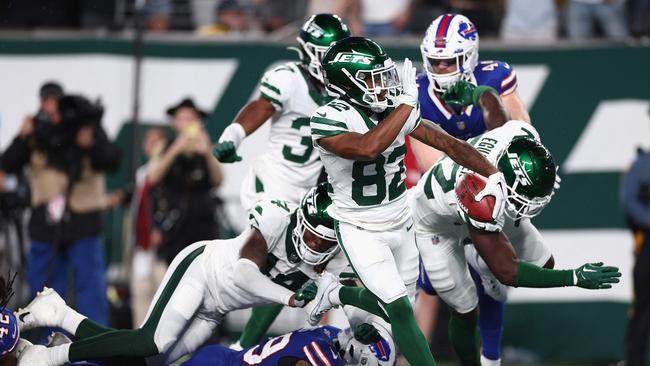All the scientific evidence screams: helmets do not stop brain trauma

The majority of those messages are why I don’t understand that concussions and chronic traumatic encephalopathy (CTE) would be solved if players, especially kids, all wore helmets.
Just this week I got an email telling me how I can design a study comparing the effect of hitting my head wearing a pillow versus not wearing a pillow. SCIENCE!
But seriously, wearing of helmets to prevent concussion and CTE is a myth that desperately needs to die.
Don’t get me wrong, helmets have their place in the workforce (think construction), and in sports such cycling, motor racing, and equestrian, where helmets protect the skull from fracturing and reducing the risk of severe head injuries. As a middle-aged man in Lycra (MAMIL), I wear a helmet when on the bike, irrespective of the laws.
But helmets have limited capacity. Helmets do not protect the brain tissue inside the skull from moving, stretching and micro tearing the brain cells that results in concussion.
We still see many American football players concussed despite the fact that they wear helmets with millions of dollars of research invested in their design.
Yes, but these are hard helmets, you may say, but what about soft-shell padded helmets like they wear in rugby, and some do in Australian rules?
They must be better at absorbing force. Indeed, there are different padded helmets on the market that claim to reduce the force of impacts in laboratory testing.
The short answer is that they still do not appear to absorb enough force to reduce concussions on the field.
We have years, decades, of evidence for this. For example, a recent large-scale study conducted by Monash University and the Australian Football League (AFL) on 400 kids showed no difference in concussion rates between those who wore padded helmets versus those who didn’t.
So why are helmets, hard or soft shell, ineffective?
It relates to the structure of the brain. Brain tissue is soft and takes little impact to distort. My colleague, clinical associate Professor Michael Buckland, director of the Australian Sports Brain Bank, illustrates how delicate brain tissue is via a jelly model.
Brains are not like what you may have dissected in high school, which is what we call a “fixed” brain, they are delicate, complex organs.
The brain is so fragile that it sits in a fluid barrier separating contact with the skull bone. This fluid can protect the brain from impacts, but only at very low levels such as knocking your head accidentally, which can be quite annoying (and have me wishing I had my pillow helmet).
However, with heavy hits to the head like those in contact sports, this fluid works against the brain because the fluid allows for greater movement, increasing the force and damaging brain cells.
While I respect people’s personal opinions and experiences, these are not the foundation of science. The data in study after study in thousands of players and hundreds of thousands of hours of exposure does not support people’s personal opinion.
And given the current data, codes like the NRL, Rugby Australia and the AFL need to be clearer in their messaging at all levels of the sport that helmets do not protect against concussion.
Surprisingly, in the recent coronial inquest into Shane Tuck, who died with CTE, the chief medical officer for the AFL revealed possibly introducing mandatory helmets as early as next year; a claim that was tempered by an AFL spokesperson, suggesting the process was in its infancy, and presently no timeline.
I appreciate that this is an emotional issue. Concussions and CTE are threatening the fabric of the sports we love to play and watch. But we can’t simply suggest helmets are the answer and continue blindly putting our players at risk.
We need to address other measures to reduce harm. Overseas, sports are approaching the issue via modification of training practices (train smarter, not harder) and modification of rules for children and young adolescents, which was a recommendation from the recent Senate Inquiry into concussion and repeated head trauma in sport.
And if in the future new technologies and materials developed can help remodel helmets that reduce impact forces to the brain, and the science is rigorous and indisputable, as a scientist I would accept that they can play a role in protecting athletes’ brains.
But until then, I will defend the current evidence that clearly shows that helmets do not protect athletes from suffering concussions or reduce exposure to physical brain trauma.
And I hope we can spread the word to our friends and colleagues, so I don’t keep getting emails telling me how to do science.
Alan Pearce has been a clinical neuroscientist and concussion/CTE researcher for more than 15 years



As a concussion researcher I get lots of messages on how I can do my science job better.